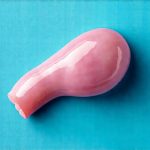Pelvic nerve fatigue is increasingly recognized as a contributing factor to chronic pelvic pain, digestive issues, and overall diminished well-being. Often stemming from stress, trauma, physical strain, or repetitive movements, this fatigue manifests as a hypersensitivity within the pelvic region – nerves become overstimulated and less efficient at relaying signals correctly. This can lead to a vicious cycle of pain, tension, and anxiety. While conventional treatments exist, many individuals are seeking complementary approaches that offer gentle yet profound support for nervous system regulation and restoration. Sound, particularly through sound baths, presents a promising avenue for easing pelvic nerve fatigue due to its capacity to induce deep relaxation, modulate the nervous system, and promote self-regulation.
Sound therapy isn’t about ‘fixing’ anything; rather it’s an invitation to allow the body to return to a state of natural balance. The gentle vibrations created by instruments like singing bowls, gongs, chimes, and even tuning forks can resonate with the pelvic region, helping to soothe overactive nerves and restore a sense of calm. This isn’t simply about pleasant sounds; it’s about harnessing the power of sound frequencies to influence physiological processes. A thoughtfully curated home sound bath offers an accessible way to integrate this restorative practice into daily life, creating a sanctuary for nervous system support and mindful self-care. Consider incorporating these practices alongside steps to simplify your day for pelvic ease.
Understanding Pelvic Nerve Fatigue & Sound’s Role
Pelvic nerve fatigue isn’t typically visible on standard medical imaging. Instead, it’s often diagnosed through symptom assessment and exclusion of other conditions. The nerves in the pelvis become overwhelmed, losing their ability to efficiently process signals related to pain, sensation, and organ function. This can result in a range of symptoms including: – Chronic pelvic pain – Bladder or bowel dysfunction – urgency, frequency, incontinence – Painful intercourse – Digestive disturbances like IBS – Lower back pain – often radiating into the pelvis – General feelings of tension and anxiety within the pelvic region. Sound baths offer a non-invasive way to address this fatigue by directly influencing the vagal nerve, a crucial component of the parasympathetic nervous system responsible for “rest and digest” functions. When activated, the vagal nerve helps reduce stress responses, lower heart rate, and promote feelings of safety – all vital for calming an overstimulated nervous system. This approach can complement balanced nutrition to support pelvic nerve recovery.
The vibrations produced during a sound bath don’t just reach the ears; they travel through the body via bone conduction, impacting tissues at a cellular level. This gentle vibrational massage can help release tension in pelvic floor muscles, which often contribute to nerve compression and irritation. Furthermore, the immersive nature of a sound bath encourages deep relaxation and mindfulness, allowing individuals to disengage from stressful thoughts and emotional patterns that exacerbate pelvic nerve fatigue. It’s about creating an environment where the nervous system can downregulate – shifting from fight-or-flight mode to a state of calm receptivity. This is particularly helpful as chronic stress significantly contributes to the development and perpetuation of pelvic pain syndromes, and managing work stress can also ease bladder symptoms.
Sound isn’t merely auditory; it’s tactile, visceral, and deeply connected to our emotional states. Instruments like singing bowls produce complex harmonic overtones that can entrain brainwave activity – essentially guiding the brain into more relaxed states associated with healing and restoration. The resonance can feel profoundly grounding, creating a sense of spaciousness within the body and allowing for gentle release of held tension. This is why sound baths are increasingly utilized as complementary therapy alongside conventional treatments for chronic pain conditions. Integrating this practice also ties in well with daily breathing breaks to release pelvic tension.
Creating Your Home Sound Bath Space
Designing your home sound bath space doesn’t require expensive equipment or significant renovation. The core principle is creating a safe, comfortable, and quiet environment where you can fully relax without interruption. Consider the following: – Location: Choose a room where you won’t be disturbed – a bedroom, living room, or even a quiet corner of your home. – Soundproofing (minimal): You don’t need perfect soundproofing! Simply minimize external noises by closing windows and doors. Thick curtains can also help absorb sound. – Comfort: Use cushions, blankets, yoga mats, or anything that makes you feel comfortable lying down or sitting comfortably. – Lighting: Dim lighting is ideal – candles (safely used!), fairy lights, or a lamp with a low-wattage bulb can create a calming ambiance. Creating calm lighting supports pelvic relaxation as well.
The instruments themselves are relatively affordable and accessible. Singing bowls (crystal or metal), gongs, chimes, tuning forks, even ocean drums can all be incorporated. Start small – you don’t need everything at once! A single singing bowl can provide significant benefit. Online retailers offer a wide variety of options at different price points. It’s important to remember that the intention behind the sound bath is just as crucial as the instruments themselves. Approach the practice with self-compassion and a desire to nourish your nervous system. Remember, this isn’t about achieving perfect sound; it’s about creating a restorative experience for yourself.
Consider incorporating aromatherapy into your space – lavender, chamomile, or frankincense essential oils can enhance relaxation. Gentle background lighting and a comfortable temperature further contribute to the overall ambiance. Prioritize minimizing distractions during your sound bath. Turn off phones, silence notifications, and let family members know you need uninterrupted time for self-care. The goal is to create a sanctuary where you can fully surrender to the sounds and allow them to wash over you without interference. This practice aligns with creating a peaceful wake-up to calm pelvic tension.
Instrument Choices & Basic Techniques
Choosing instruments depends on personal preference and budget. Crystal singing bowls produce bright, clear tones that are often associated with higher frequencies and emotional release. Metal singing bowls offer deeper, more grounding vibrations. Gongs create complex soundscapes that can be incredibly powerful for nervous system regulation but may not be suitable for everyone due to their intensity. Tuning forks are precise instruments used for targeted vibration therapy – they can be particularly effective for addressing specific areas of tension. Begin with simple techniques: – Striking: Gently strike the bowl or instrument with a mallet. Experiment with different striking points and pressures to create varying tones and vibrations. – Rimming: Slowly circle the rim of a singing bowl with the mallet to produce a sustained, resonant tone. – Proximity: Experiment with placing instruments near different parts of your body – around the pelvis, lower back, or abdomen – to experience their vibrational effects.
Don’t feel pressured to become an expert sound healer! The focus should be on creating a safe and relaxing environment for yourself. Start with short sessions (15-20 minutes) and gradually increase the duration as you become more comfortable. Listen to your body – if any sound or vibration feels uncomfortable, adjust its proximity or choose a different instrument. Remember that this is about self-care, not perfection. Consider exploring guided sound bath recordings online initially to familiarize yourself with different sounds and techniques before attempting to create your own. This can provide inspiration and help you build confidence in your practice. Utilizing soundscapes can also reduce pelvic nervous tension.
Integrating Sound Baths into Your Routine
Consistency is key when incorporating sound baths for pelvic nerve fatigue relief. Aim to incorporate a short sound bath session (even 10-15 minutes) several times a week, or as needed when feeling particularly stressed or overwhelmed. Pairing sound baths with other self-care practices can amplify their benefits. Consider combining them with: – Gentle stretching or yoga – Mindfulness meditation – Deep breathing exercises – Journaling – to process emotions that may arise during the session. Scheduling your sound bath at a consistent time each week can help establish it as a regular part of your routine.
Listen carefully to how your body responds and adjust your practice accordingly. Some days you might prefer brighter, more uplifting tones; other days you might gravitate towards deeper, grounding vibrations. Don’t be afraid to experiment and find what works best for you. Remember that sound baths are a form of self-regulation – they’re not a quick fix but rather a sustainable practice that supports nervous system resilience over time. It is also important to remember this isn’t a replacement for medical care, but a complementary approach to support overall well-being.
Safety Considerations & When to Seek Professional Guidance
While sound baths are generally considered safe, there are a few safety considerations to keep in mind. Individuals with epilepsy, severe heart conditions, or pregnancy should consult with their healthcare provider before participating in sound therapy. Avoid placing instruments directly on the body for extended periods, especially if you have sensitive skin or underlying medical conditions. If you experience any discomfort during a sound bath – dizziness, nausea, anxiety – immediately stop the session and move to a comfortable position.
Sound baths are not intended to diagnose or treat any medical condition. They are a complementary therapy designed to support relaxation and well-being. If you have persistent pelvic pain or other concerning symptoms, seek guidance from a qualified healthcare professional. A sound therapist or practitioner specializing in vibrational medicine can provide personalized instruction and ensure safe practices. This is particularly beneficial if you’re new to sound therapy or have specific health concerns. Remember that self-care is an ongoing process – be patient with yourself, listen to your body, and prioritize your well-being.





















